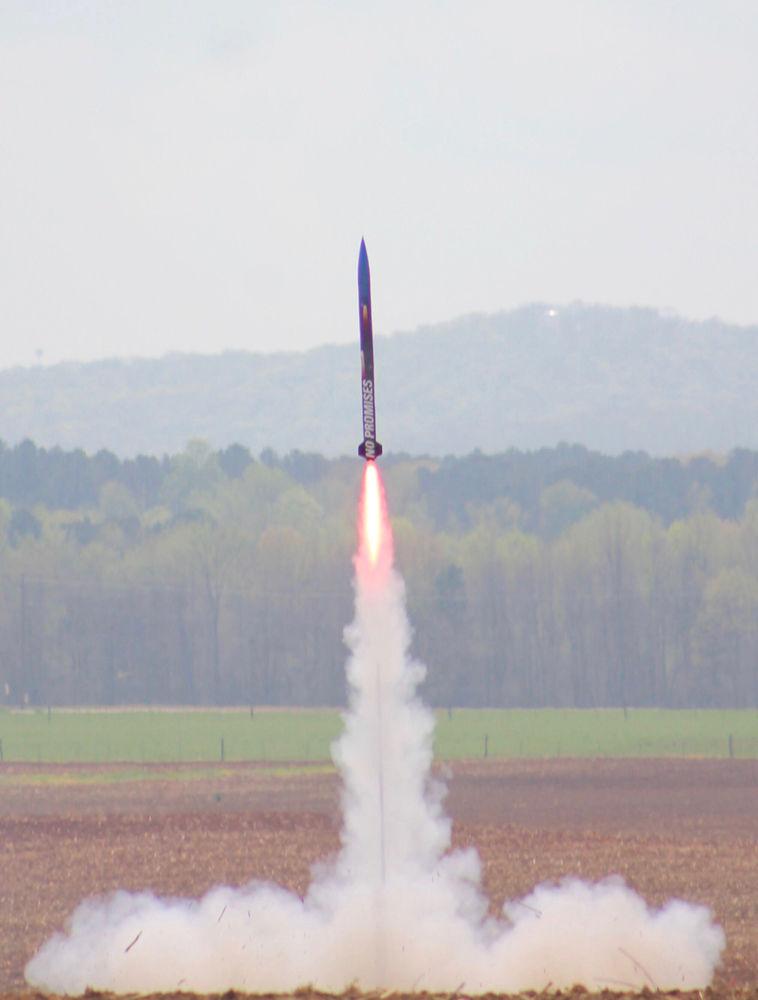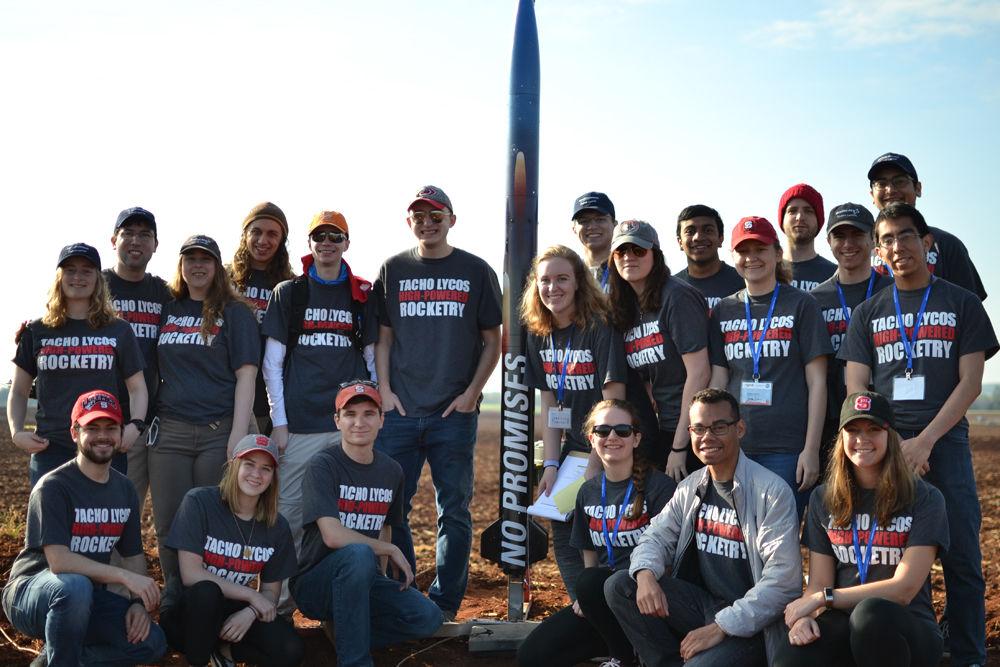High-Powered Rocketry Club is a group that gives undergraduate students the chance to build industry-standard rockets and practice real-world aerospace engineering. Every year, the group competes against other teams in the Student Launch event, which is sponsored by NASA’s Marshall Space Flight Center.
John Inness, a fifth-year studying aerospace engineering, is the coordination lead for the team. He spoke about the launch that the team participates in each year and discussed this year’s challenge of creating an unmanned aerial vehicle (UAV).
“We compete in the NASA Student Launch, which is a yearly eight-month-long competition … to emulate the NASA process of some sort of future NASA mission,” Inness said. “For example, this year’s design goal was to make a UAV that would fit inside the rocket and then deploy upon landing, which is similar to the real life Mars 2020 mission.”
While the competition is fun and rewarding, it can also pose many challenges to the team. Throughout the competition, the teams will write reports that describe the process of creating a rocket. Putting the rocket together can take three weeks of constant work.
Ashby Scruggs, a fourth-year studying aerospace engineering, is the treasurer of the club. She explained some of the challenges posed by the competition.
“NASA will give us a set of requirements that we have to fulfill in the form of a high-powered rocket,” Scruggs said. “Usually it comes with an altitude requirement. We’ll have to make the rocket go a certain height and then we also design a payload that goes into the rocket. This year that was a deployable UAV that was expelled from the rocket.”
The main aspect about the team’s rocket that changes each year is the payload. A payload is what an aircraft carries and is the ultimate goal of the project, like launching a satellite. A UAV is a small drone that can fly on its own or be controlled remotely. These are often the payloads in such projects.
“This year our project was designing a deployable UAV that would come out of the rocket upon landing and fly away to a different location to drop off a navigational beacon,” Scruggs said.
The High-Powered Rocketry Club can also function as a Senior Design Project. The team is composed of underclassmen who serve as officers as well as five to seven seniors who serve as design leads. The design leads each take on an important design aspect of the rocket, such as structural analysis, throughout the year.
Additionally, the club provides real-world engineering experience for its members. Scruggs highly recommends that engineering students join a design club to gain experience outside of the classroom. During the Student Launch, teams are held to the same standards as professional NASA contractors.
“So what we’re doing in this competition is really gearing young engineers for NASA projects in the future,” Scruggs said, “It’s giving us that experience that will prepare us for both industry and government work.”
Inness added that he believed working with the club helped him get an internship with NASA.
“For most of your classes, it’s mostly theoretical knowledge with projects thrown in,” Inness said. “Versus in rocketry club, we do an entire project all the way from the conceptual phase to flying it and actually testing it. It provides how stuff works with the theory from your classes and it gives you a chance to apply them.”
The club also does outreach in the community. This year, they have taught 5,000 kindergarten through twelfth-grade students about rockets. The group aims to inspire the next generation of STEM majors.
“The most fun thing is … outreach events where we go to local schools and tell children about rockets,” Inness said. “[We meet] elementary school children and help them make their own water bottle rockets and launch those.”
The club recently returned from this year’s Student Launch. They took first place in the altitude category. Their rocket surpassed the second-place team’s altitude by three times, according to Scruggs. The group works hard to achieve their goals, and they forge great friendships in the process.
“I really love working with people and this is a club where you’re required to do that,” Scruggs said. “Nobody can execute the goals of the club on their own … At the beginning of the year, you really have to take an idea and run with it and then you develop that idea more and more and more throughout the course of the year and eventually it becomes something. You don’t really get to see the whole process in any other situation. You don’t see a project from start to end, and that’s what’s really rewarding about the club.”
More information about High-Powered Rocketry Club can be found on their website.














